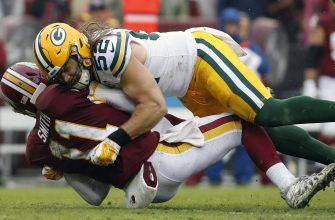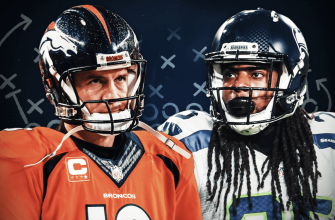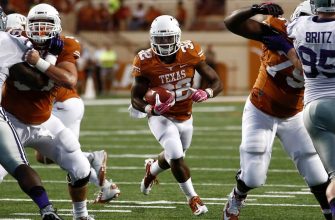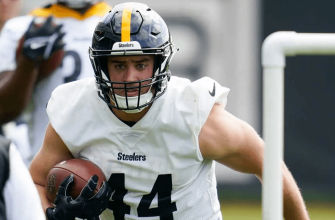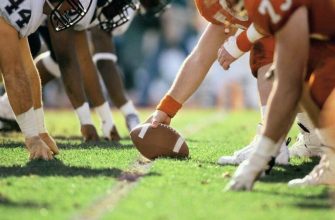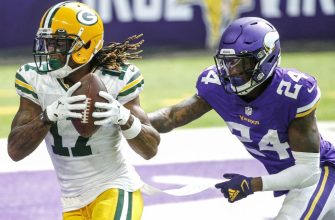A seam route is a vertical pass route typically run by wide receivers, tight ends, or running backs down the middle of the field between the numbers and hashmarks. The receiver aims to find open space in the seam between defensive zones, often exploiting gaps between linebackers and safeties.
The seam route is designed to beat both man and zone coverage. Against man coverage, the receiver uses speed and physicality to separate from the defender. Against zone coverage, the receiver sits in the soft spot between defenders. The seam route relies on timing and chemistry between quarterback and receiver to be effective.
Why Seam Routes are Effective
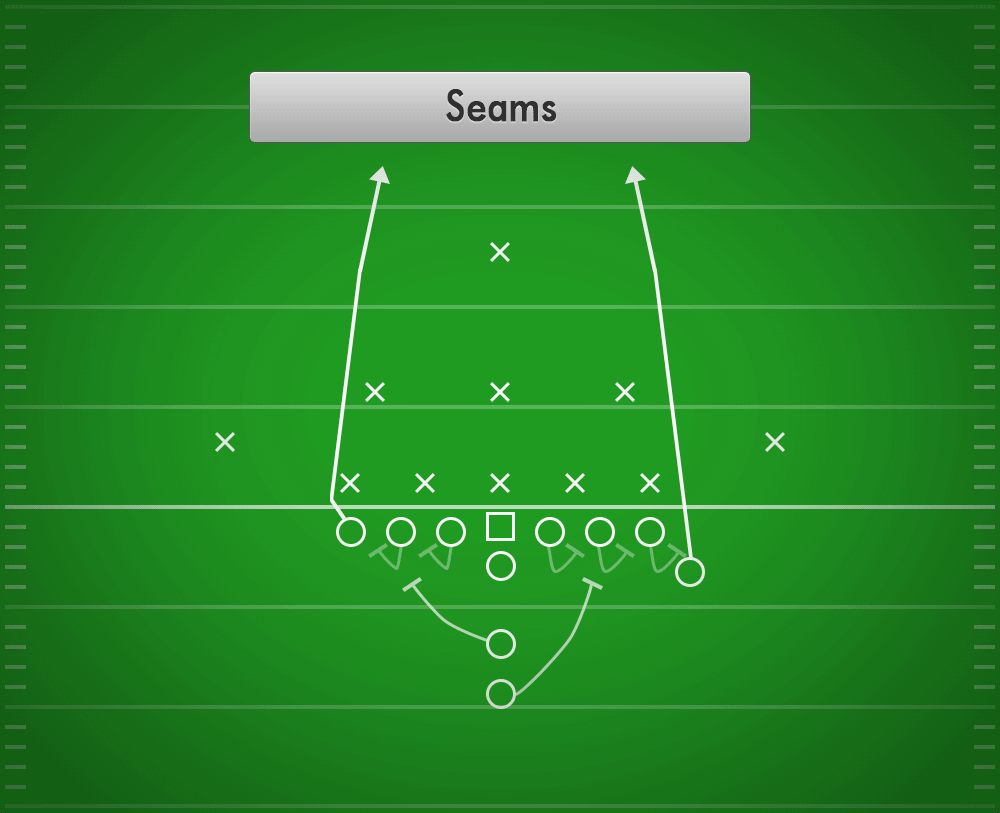
The seam route is designed to attack the space between zone defenders downfield. It often ends up being an open area of the field since it’s in between the responsibilities of multiple defenders.
The key is that it challenges the communication and chemistry of the defensive secondary. The seam receiver runs vertically down the field in between two deep zone defenders, often a safety and a cornerback. Those defenders must communicate and pass off coverage responsibilities as the receiver crosses into their zones. Any miscommunication or hesitation can leave the receiver wide open for a big play.
Unlike other vertical routes that attack the sideline or center of the field, the seam route sits right in the middle, directly at the seam between two defenders’ zones. This makes it very difficult for either defender to cover without help from the other. Safeties in a Cover 2 shell especially struggle, since they must sprint from hashmark to hashmark to cover the seam route.
So in summary, the seam route exploits gaps in zone coverage at the vulnerable seam between zones, making it a highly effective route versus teams that play a lot of zone defense.
How to Run a Seam Route
Successfully running a seam route requires precise technique and timing. The receiver must release off the line of scrimmage with urgency, getting vertical as quickly as possible to threaten the defense deep. Maintaining the stem of the route is critical – the receiver should not tip off the break by drifting towards the sidelines early. The key is staying disciplined and selling the go route before planting hard and angling slightly to the inside at the top of the route.
Beating the defender’s leverage is also important. If the defensive back is shaded to the outside, the receiver can help hold him there by staying wide initially before breaking inside. Against inside leverage, the receiver can stem hard to the sideline before cutting in. The goal is to cross the defender’s face at the breakpoint and gain separation. Precise footwork, hip sinking, and head fakes at the top of the route can all help create space from the coverage.
Throwing the Seam Route
Properly throwing a seam route requires precision, timing, and chemistry between the quarterback and receiver. The quarterback must put the ball in the perfect spot by leading the receiver and throwing to the spot where he will be, not where he currently is.
The most important factor is ball placement. The quarterback wants to throw the ball to the outside shoulder of the receiver, away from the defender. This allows the receiver to shield the defender from making a play on the ball. Throwing it to the inside shoulder risks an interception by the covering defender.
The quarterback must also throw with the proper touch and trajectory. He wants a tight spiral with a downward trajectory to hit the receiver in stride as he’s sprinting downfield. Too much air under the ball allows time for safeties to break on the route.
Timing is critical on seam routes. The quarterback must release the ball as the receiver makes his break to the inside after passing the defender. Throwing too early risks an interception, while throwing late negates the separation created by the route.
The quarterback and receiver must spend time perfecting the seam route to get the timing and placement down. The more chemistry they have, the more in sync the throw and catch will be on this timing route down the seam.
Covering the Seam Route
Defending the seam route can be challenging for defenses. Cornerbacks often play press or “jam” coverage at the line of scrimmage to disrupt the timing of seam routes. If the receiver beats the press, pattern matching zones like Cover 3 are common ways to take away seam routes. The outside cornerback will carry the receiver vertically up the seam if he runs that route.
Meanwhile, the safety provides help over the top to prevent big plays. Safeties must have great range and anticipation to cover ground on seam routes. Some defensive schemes will double team the seam route with both the cornerback and safety to eliminate it completely. Disguising coverage is crucial so the quarterback doesn’t know if help will arrive. Overall, defending seam routes requires teamwork between the cornerback and safety to limit explosive plays.
Famous Seam Routes

The seam route has led to some of the most memorable plays in NFL history. Two famous examples that stand out are Lynn Swann’s diving catch in Super Bowl X and Eli Manning’s throw to Mario Manningham during Super Bowl XLVI.
In Super Bowl X, Pittsburgh Steelers wide receiver Lynn Swann made an acrobatic catch on a 64-yard touchdown pass from Terry Bradshaw. This seam route is considered one of the greatest catches in Super Bowl history. Swann had to fully extend his body and reach back to haul in the pass over Dallas Cowboys cornerback Mark Washington. His graceful catch and ability to get two feet in bounds while maintaining control of the ball illustrated superb body awareness and concentration. The “Swann dive” helped propel the Steelers to victory and earned Swann the Super Bowl MVP award.
Similarly, Eli Manning connected on a 38-yard seam route pass to Mario Manningham during the Giants’ game-winning drive against the Patriots in Super Bowl XLVI. With only 3:46 left on the clock, Manning dropped a perfect pass between two defenders into Manningham’s hands along the left sideline. This clutch catch kept the drive alive and set up Ahmad Bradshaw’s game-winning touchdown run. Manningham’s seam route showcased the difficulty of covering this route and Manning’s precision in executing it under pressure.
These two seam route receptions underscore the big-play potential of this route. In the clutch moments of the biggest game, Swann and Manningham rose to the occasion with memorable seam grabs.
Seam Route Variations
The seam route is a staple route in many passing offenses, but it can be run in several variations to take advantage of coverage or create confusion for the defense. Three of the most common seam route variations are the seam read, double seam, and seam-and-go routes.
The seam read route is effective against zone coverage. The receiver aims for the seam between two deep zone defenders, but reads the coverage after the snap to find the open zone. Based on the defense’s alignment, the receiver can convert the seam to a post, corner, or in-breaking route to get open.
The double seam incorporates two receivers running seam routes on the same side of the field. This puts stress on the safeties and linebackers in coverage. One receiver usually runs a true seam, while the other may convert his route based on the coverage. The quarterback reads the defense after the snap to find the open receiver.
On a seam-and-go route, the receiver bursts up the seam like he’s running a true seam route, then breaks vertically on a go route once he’s 12-15 yards downfield. This route exploits defenses that jump the underneath seam route. The receiver gets behind the coverage for a big play.
Importance of Seam Route Chemistry
Timing and trust between the quarterback and wide receiver are critical for successfully executing the seam route. The quarterback must release the ball before the receiver makes their break on the route, requiring implicit trust that the receiver will be in the right place at the right time. This is especially challenging given that the seam route often takes the receiver into tight coverage between multiple defenders.
The quarterback and receiver build chemistry through extensive practice together, developing a feel for each other’s tendencies and timing. This allows the quarterback to confidently throw into small passing windows, knowing the receiver will be there to make the catch. Elite quarterback-receiver duos demonstrate seam route chemistry through perfectly timed passes placed right in stride for the receiver.
Trusting your receiver makes throwing into tight coverage on seam routes possible. Building seam route chemistry through practice repetition is key for effectively executing this critical route.
Seam Routes vs Other Route Combos
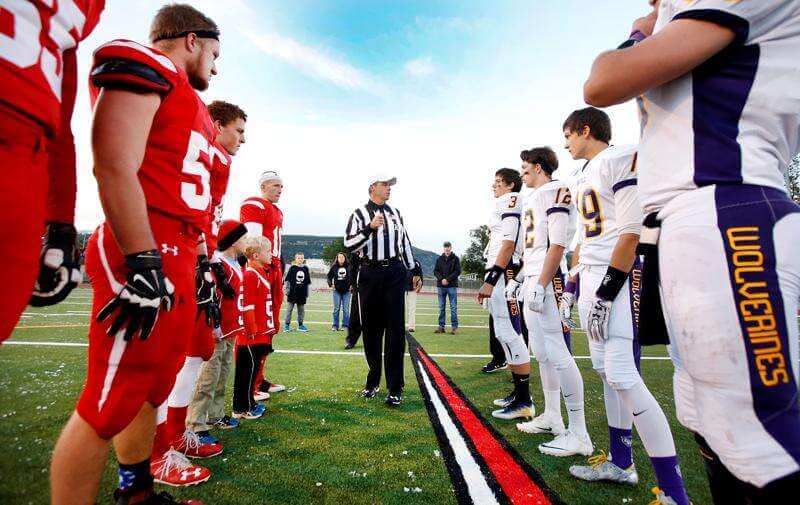
The seam route is often compared to other vertical routes like the post, corner, and crossing routes.
Here’s how the seam route differs from these other routes:
-
Compared to crossers: Crossing routes involve a receiver running horizontally across the field, while seam routes are vertical up the seam between defenders. Crossers aim to get open in the middle of the field, while seam routes stretch the field vertically.
-
Compared to posts: While posts and seams are both vertical routes, post routes break to the inside after passing defenders while seam routes continue straight upfield. Posts aim to find open space in the middle, while seams focus on exploiting the gap between defenders.
-
Compared to corners: Corner routes involve the receiver breaking toward the sideline at a 45 degree angle, while seam routes stay vertical up the middle of the field. Corners aim for the sidelines and seams aim for open space between defenders.
So in summary, seam routes are vertical routes that exploit the middle gap unlike crossers and corners, and don’t break inside like posts. The seam is unique in targeting the space between the safeties and linebackers.
The Future of the Seam Route
The seam route has become an increasingly popular route concept in modern NFL offenses thanks to athletic tight ends who can stretch the field vertically. Teams like the Chiefs with Travis Kelce and the 49ers with George Kittle have shown how dangerous seam routes can be when run by fast tight ends matched up against slower linebackers.
As defenses continue to play more zone coverages and keep safeties deep to prevent big plays, seam routes up the middle of the field can exploit the gaps between zone defenders. Quarterbacks with big arms can fit tight window throws between the hashes to hit their tight end in stride for huge gains. With defenses so focused on stopping the run and short passing game, athletic tight ends running seam routes can beat them over the top.
The seam route isn’t going anywhere in the NFL. As long as offenses have tight ends who can separate from defenders vertically, seam routes will be a staple concept to attack the deep middle of defenses. With continued mismatches against linebackers and safeties, expect seam routes to tight ends to only grow in popularity as offenses aim to stay ahead of evolving defenses.


